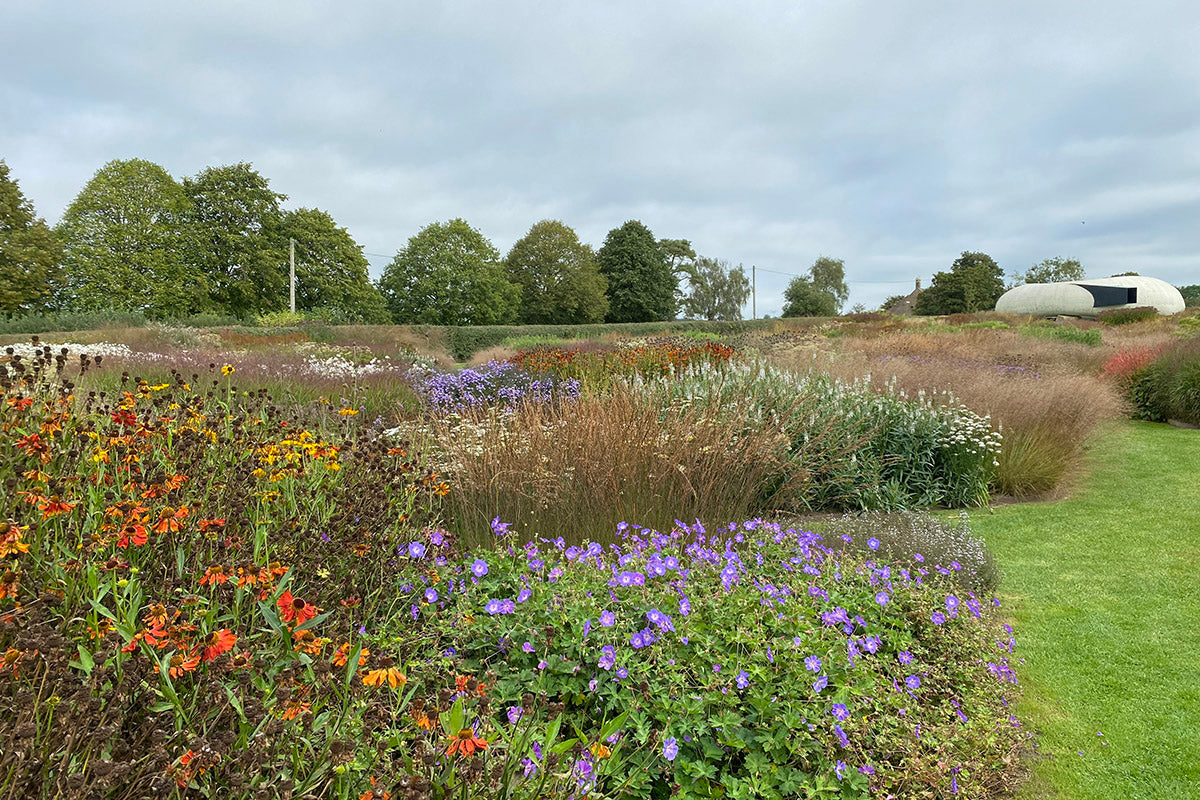Piet Oudolf Field, Bruton, Somerset

This small but perfect garden, designed by Dutch garden designer Piet Oudolf, is a beautiful tapestry of colour even at this time of year. The gardens were created from the farmland, while the farm buildings are now a gallery and arts centre.
As you face out from the gallery, the garden appears to rise up into the distance. A pond is surrounded by lush planting that flows into large bold drifts of perennials in organic shaped beds. Perfectly manicured grass paths lead you through the planting while at the centre is a spine of gravel with little mounded circular lawns. Views of the fields beyond create vistas and a sense of space.
The planting is a great example of how to use perennials for autumn and winter interest. Piet, often regarded as the founder of the New Perennial Movement, is famous for his ability to create interest throughout the seasons and there is plenty of colour as summer comes to a close. As well as asters, heleniums and various Japanese anemones, you’re hit by a shock of crimson Echinacea ‘Fatal Attraction’, the umbellifer Selinum wallichianum with its bright green leaves looks fresh, while the more unusual pale blue Scutellaria incana is going strong.
But the beauty comes as much from the subtle browns and golds as the plants decay. Structural seed heads such as the statuesque Phlomis russelliana and echinops are embraced. Echinacea pallida, which stopped flowering in July has become a dramatic dark cone floating high on long stems against the swathes of golden grass. The moor grasses, Molinia ‘Edith Dudszus’ and the much taller M. ’Transparent’ create a delicate sultry haze while the Sporobolus heterolepsis has a golden glow.
This is a garden that needs to be visited throughout the year to really appreciate the sophistication of the planting that so masterfully celebrates the changing seasons.







